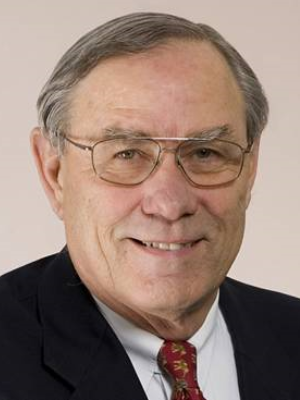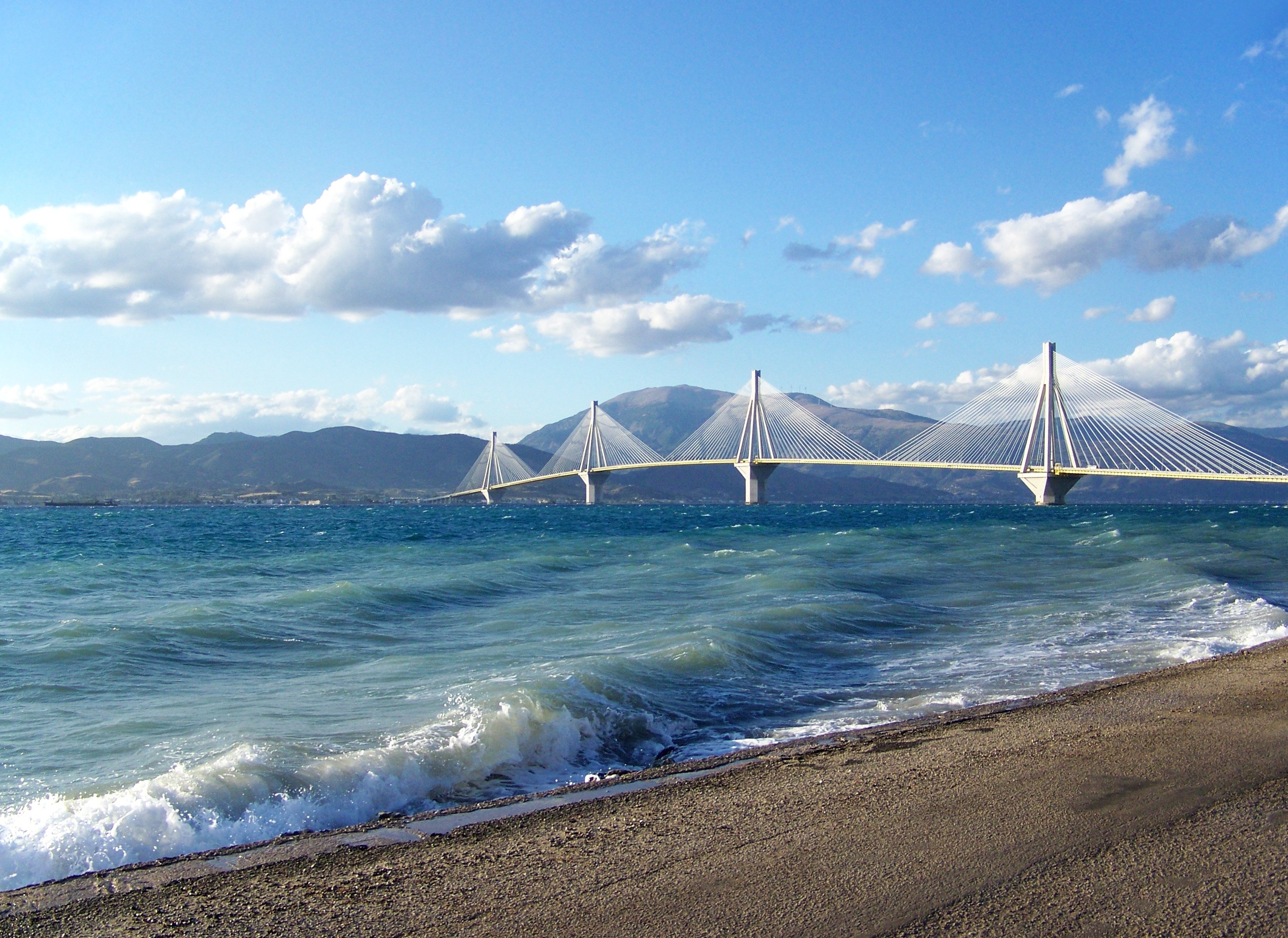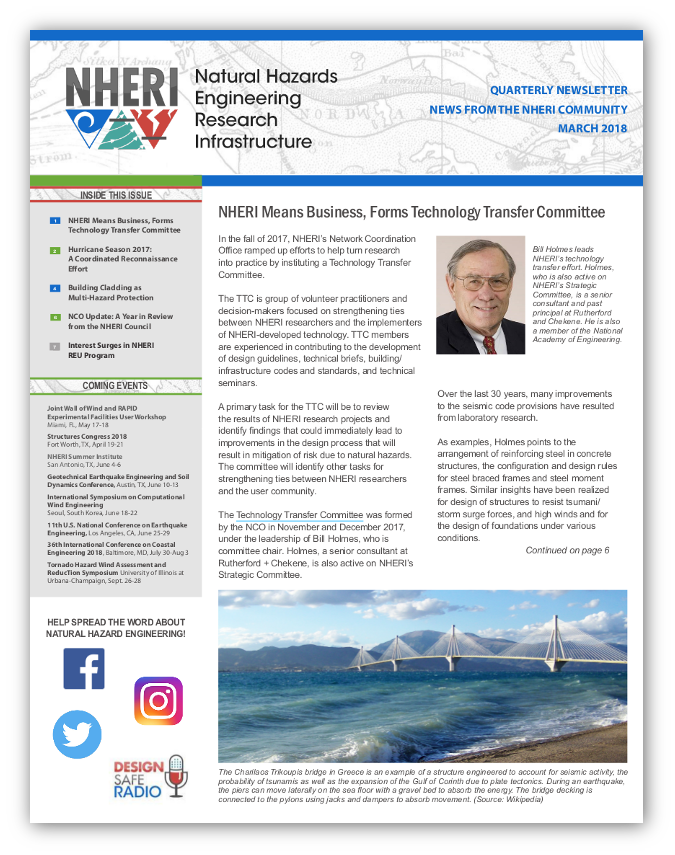NHERI Means Business, Forms Technology Transfer Committee
Published on March 19, 2018

Bill Holmes leads NHERI's technology transfer effort. Holmes, who is also active on NHERI's Strategic Committee, is a senior consultant and past principal at Rutherford and Chekene. He is also a member of the National Academy of Engineering.
In the fall of 2017, NHERIs Network Coordination Office ramped up efforts to help turn research into practice by instituting a Technology Transfer Committee.
The TTC is group of volunteer practitioners and decision-makers focused on strengthening ties between NHERI researchers and the implementers of NHERI-developed technology. TTC members are experienced in contributing to the development of design guidelines, technical briefs, building/infrastructure codes and standards, and technical seminars.
A primary task for the TTC will be to review the results of NHERI research projects and identify findings that could immediately lead to improvements in the design process that will result in mitigation of risk due to natural hazards. The committee will identify other tasks for strengthening ties between NHERI researchers and the user community.
The Technology Transfer Committee was formed by the NCO in November and December 2017, under the leadership of Bill Holmes, who is committee chair. Holmes, a senior consultant at Rutherford + Chekene, is also active on NHERIs Strategic Committee.
Over the last 30 years, many improvements to the seismic code provisions have resulted from laboratory research.
As examples, Holmes points to the arrangement of reinforcing steel in concrete structures, the configuration and design rules for steel braced frames and steel moment frames. Similar insights have been realized for design of structures to resist tsumani/storm surge forces, and high winds and for the design of foundations under various conditions.
Typical technology implementers, such as codes and standards committees or professional organizations, in general do not have systematic programs to follow research results from NSF awards as a result, practical insights from such research can be missed, Holmes says.
Tech Transfer Committee members were nominated by the NCO Strategic Committee and approved by the NHERI Council. The committee consists of nineteen volunteers. An executive sub-committee was formed consisting of the committee chair and a representative of each interest group: earthquake, tsunami/storm surge, wind and geotechnical.
The first meeting of the Tech Transfer Executive Committee took place on January 24, 2018, at which time ongoing NHERI research awards were assigned to the appropriate interest groups and subsequently distributed to the committee members for familiarization; reviews will be ongoing and completed near the end of each award.
The process of transferring research to practice is a long-term endeavor. Holmes expects the committee will contact project PIs once it is clear that results from the research can be implemented quickly.
In the meantime, PIs are welcome to contact the Tech Transfer committee, which is composed of members well-versed in design practice, codes and standards.

The Charilaos Trikoupis bridge in Greece is an example of a structure engineered to account for seismic activity, the probability of tsunamis as well as the expansion of the Gulf of Corinth due to plate tectonics. During an earthquake, the piers can move laterally on the sea floor with a gravel bed to absorb the energy. The bridge decking is connected to the pylons using jacks and dampers to absorb movement. (Source: Wikipedia)
NHERI Quarterly
Spring 2018
NHERI Means Business, Forms Technology Transfer Committee
Hurricane Season 2017: A Coordinated Reconnaissance Effort
Building Cladding as Multi-Hazard Protection
NCO Update: A Year in Review from the NHERI Council
Education Corner: Interest Surges in NHERI REU Program






